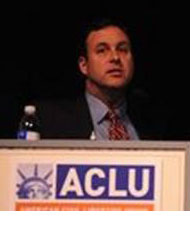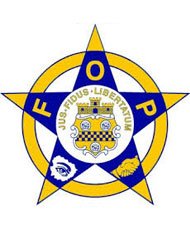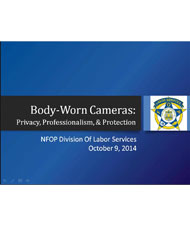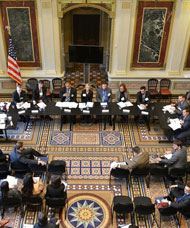Law enforcement–community member encounters are transactional events, with each participant making decisions and responding to the decisions of the other participant. As a result, use-of-force by a law enforcement officer is the culmination of a series of earlier actions and reactions. However, review of force incidents traditionally ignores earlier stages of an encounter and focuses entirely on the final-frame decision (called the split-second syndrome). Body-worn cameras (BWC) represent an opportunity to overcome the split-second syndrome because the technology can allow for a full review of all actions made by the officer during an encounter, from start to finish. For example, BWCs can help answer questions such as:
- How did the officer act early on in the encounter that deescalated or escalated the potential for violence?
- Upon review of the video, is there anything the officer might have missed that would have resolved the encounter differently?
BWC recordings can be a part of a comprehensive review of use-of-force encounters to determine why they ended in violence, and to identify better practices for resolving encounters peacefully (which can then be incorporated into officer training). During his testimony before the President's Task Force on 21st Century Policing, Dr. Michael D. White of Arizona State University stated:
"BWCs represent an opportunity to overcome the split-second syndrome because the technology can provide a permanent video record of the entire police–community member encounter. BWCs allow for a full review of all decisions made by the officer during an encounter, from start to finish. Did the officer make decisions early on in the encounter that escalated the potential for violence? Did the officer miss opportunities to resolve the encounter peacefully? BWCs can facilitate a comprehensive review of forceful encounters to determine why they ended in violence; and to identify best practices for resolving encounters peacefully."
Maggie Goodrich, Los Angeles (CA) Police Department, and Kay Chopard Cohen, National District Attorneys Association, offered related thoughts in the February 26-27, 2015 Bureau of Justice Assistance BWC Expert Panel. Goodrich explained, "the purpose of BWCs is the collection of evidence and to determine what really happened." Chopard Cohen asserted, "criminal investigations today are so much more complex than years ago. We did not have the same techniques before. There was no DNA, just a few eyewitnesses. Today we have lots of corroboration. We need to weigh civil liability with requirements for civil prosecution and balance those so we are looking out for both sides in any cases. From a prosecutor's prospective, we need to worry about victim safety and confidentiality. We need to worry about safety of innocent bystanders. BWCs add a layer of complexity; we want to see what happened, but sometimes when an officer responds, it is not right for public viewing. There are situations where we have to educate the public and legislatures that this should not be available for public viewing. We need to be the protector of that and uphold the Constitution to make complexities work."






